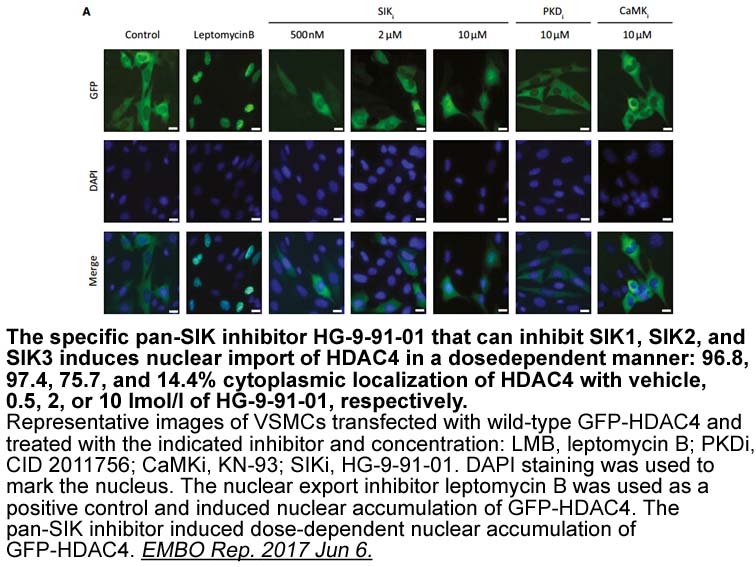Archives
pitavastatin Another group has recently found
Another group has recently found that miRNA-146a, by targeting of TRAF6, could suppress of M1 marker pitavastatin in the context of tuberculosis (). The current work from He and colleagues extend these findings by showing that miRNA-146 expression by macrophages can be regulated by type 2 cytokines and by identifying STAT1 as a novel additional target of the miRNA-146 family that results in inhibition of polarization towards a pro-inflammatory M1 phenotype. As the mechanistic data from the study performed by He and coworkers were primarily generated in macrophage models, an important next step will be to validate these findings and to study the functional relevance of miRNA-146 induced suppression of M1 polarization during schistosomiasis. One could speculate that since macrophages in the liver will be exposed to both IFN-γ and Type 2 cytokines during acute schistosomiasis, induction of miRNA-146 expression may be important to enforce and sustain M2 polarization to control immunopathology. Another question that arises from this work is to what extent this mechanism plays a role in the M1/M2 balance in other contexts. A recent study found that IL-4-polarized M2 macrophages can be repolarized to an M1 phenotype by IFN-γ just as efficiently as unpolarized ‘M0’ control macrophages (), indicating that type 2 cytokine-driven limitation in M1 polarization through miRNA-146 may not be operating in that experimental model and suggests that the importance of miRNA-146 in regulation of M1/M2 polarization is context dependent. Nonetheless, studies such as the one performed by He and colleagues illustrate how multilayered and complex the regulation of macrophage biology is and what role miRNAs can play in this. A better understanding of how and which miRNAs regulate macrophage differentiation may help to identify potential new therapeutic targets to ultimately treat diseases that are characterized by misbalanced macrophage polarization.
Disclosure
Zika virus (ZIKV), the mosquito-borne flavivirus responsible for the current outbreak in Latin America, was first isolated in 1947. Nevertheless, the link between ZIKV and the neurological complications observed in humans, like Guillain-Barré syndrome (GBS) and microcephaly, was not formally established until April 2016 by the Centers for Disease Control and Prevention (CDC). Although retrospective studies have also confirmed the link in a previous outbreak in French Polynesia (2013), how these clinical signs could have gone unnoticed for almost 70years while the virus had been circulating in Africa and Asia is surprising. The existing isolates of ZIKV have been classified in two main lineages, African and Asian, although a recent report has identified a third one, where the original African lineage was renamed to African-I, and a previously neglected lineage circulating in Senegal and Cote d\'Ivoire has been named African-II (). The Asian lineage was the one that spread to Oceania\'s islands and the Americas, and two main hypotheses have been proposed for the unexpected clinical outcome of ZIKV in the last outbreaks. On one hand, clinical signs could have been overlooked due to poor surveillance in low-income territories. The other possibility would be that the new derived strains would have genetically changed enough to differ in their pathogenesis ().
Reports on ZIKV have been scarce for many years, until a Public Health Emergency of International Concern (PHEIC) was issued by the World Health organization (WHO) in February 2016, engaging the scientific community in an unprecedented effort to develop a coordinated global respons e. Although both Asian and African ZIKV strains have been shown to be neurovirulent (), the only African strain used for those studies (MR-766, 1947) has been extensively passaged in suckling mice brains (). This may have added multiple mutations that could affect the observed results, especially considering ZIKV is an RNA virus. Hence, there is still a need to clarify if the newly-found clinical manifestations are specific for the Asian lineage, or could have also been induced by the African ZIKV.
e. Although both Asian and African ZIKV strains have been shown to be neurovirulent (), the only African strain used for those studies (MR-766, 1947) has been extensively passaged in suckling mice brains (). This may have added multiple mutations that could affect the observed results, especially considering ZIKV is an RNA virus. Hence, there is still a need to clarify if the newly-found clinical manifestations are specific for the Asian lineage, or could have also been induced by the African ZIKV.